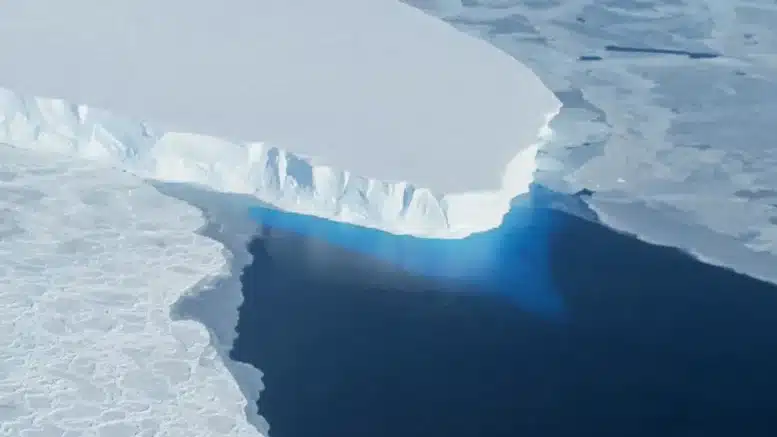The Thwaites Glacier, often dubbed the “Doomsday Glacier,” has earned its ominous nickname for a compelling reason. Situated in western Antarctica, this natural marvel spans roughly the size of Florida, covering an expansive 4,000 square miles (192,000 square kilometers). The catastrophic implications of its potential meltdown loom large over humanity, as its collapse would spell disaster. If left unchecked, Thwaites could single-handedly contribute to a sea level rise of approximately two feet (65 centimeters). However, the repercussions could extend far beyond this initial impact, setting off a chain reaction of melting events that might ultimately elevate sea levels by a staggering 10 feet (3 meters).
The profound concern surrounding Thwaites Glacier has prompted scientists, led by the University of Houston, to delve into its history. Their findings, published in the journal PNAS, shed light on alarming trends. Through an analysis of marine sedimentary records spanning the past 10,000 years, researchers uncovered evidence suggesting that Thwaites commenced a significant ice loss as early as the 1940s.
The research team gleaned insights by collecting samples from various locations adjacent to both Thwaites and the nearby Pine Island Glacier. Their investigation pointed to an extreme El Niño climate pattern between 1939 and 1942, which likely elevated temperatures in the waters surrounding western Antarctica. This natural phenomenon, coupled with the nascent effects of human-induced climate change, dealt a severe blow to Thwaites. The glacier experienced an unprecedented rate of ice loss during this period, exacerbating its vulnerability.
“Our work provides robust new evidence that glacier retreat in the Amundsen Sea was initiated in the mid-twentieth century, likely associated with climate variability,” the scientists noted in their paper. Highlighting the significance of Thwaites, University of Houston geologist Julia Wellner emphasized its role as a critical barrier holding back a broader expanse of ice. Its stability is crucial not only due to its contribution to rising sea levels but also because it serves as a linchpin, restraining a vast area of ice behind it.
While Antarctica has witnessed periods of melting in the past, the current scenario underscores a troubling reality: human activity is exacerbating the situation to a significant degree. Recent studies underscore the urgency of addressing climate change, as the consequences of inaction loom ominously over the planet’s future.

